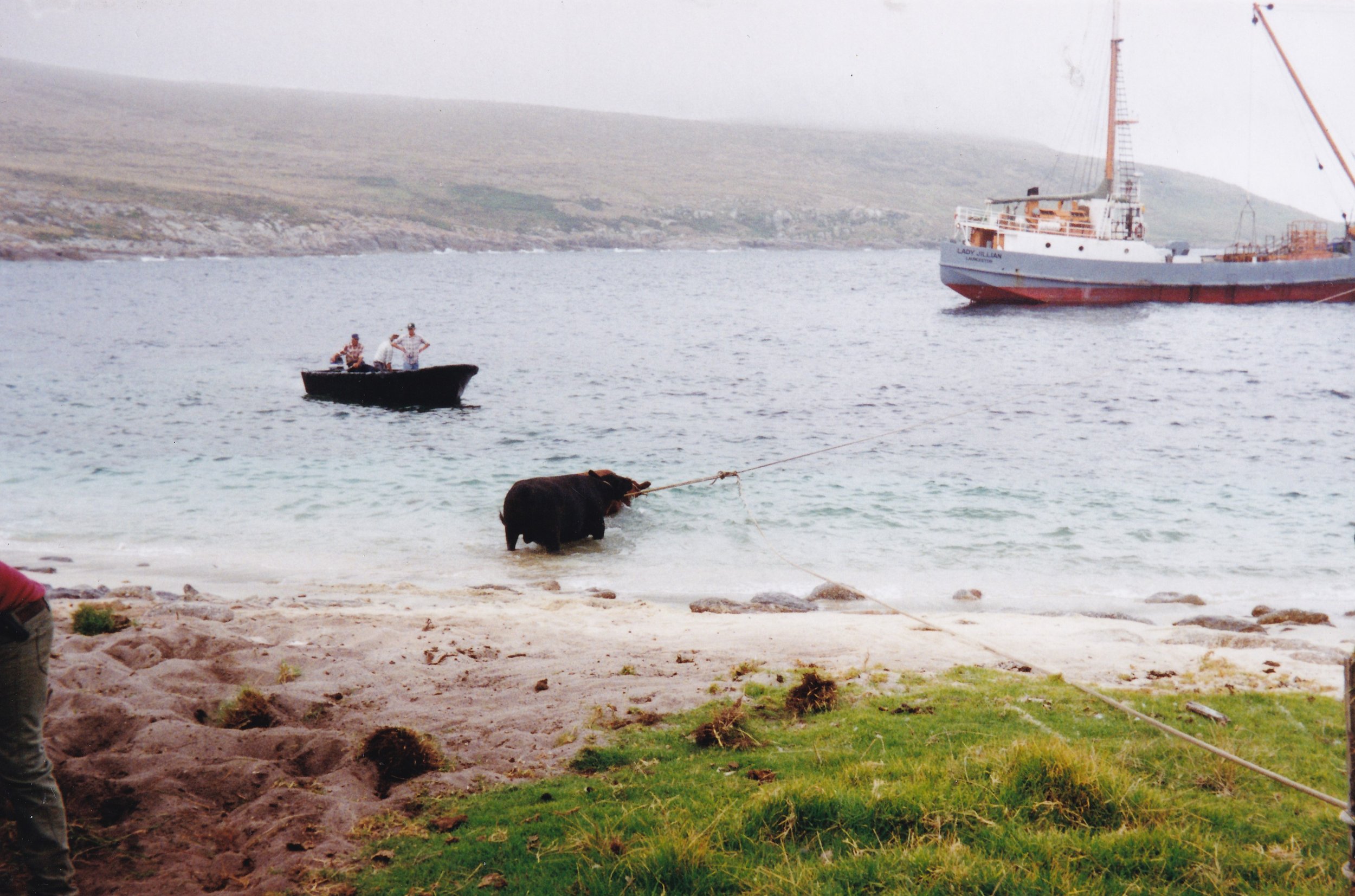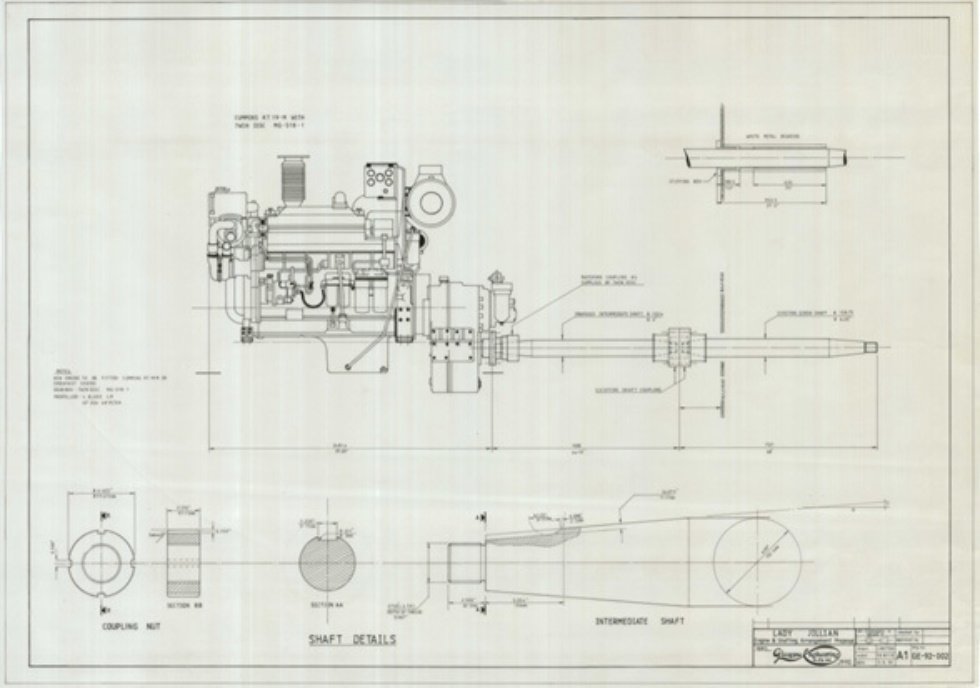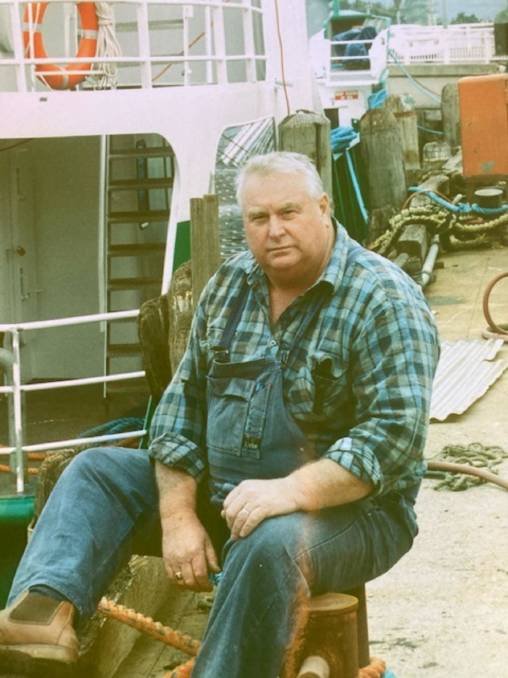Auxiliary Ketch Lady Jillian -
Auxiliary Ketch Lady Jillian -
The Lady Jillian Story
In 1945 Reginald Crouch designed and began construction of an unusual, composite hulled, three masted auxiliary trading schooner for the southern Australian coastal trade.
So soon after WW2, men and materials were in short supply. Working alongside the Port Adelaide shipwrights, Reg also recorded the ships’ construction on his 16mm movie camera using early colour film.
Finished in 1948, she was christened by Regs’ wife Beryl, and named after his daughter, Jillian.
Painting image: courtesy Robin Walker
Her early role was as a lighter, transporting grain from shallow ports to overseas bound vessels and interstate ships. Her flat wooden hull allowed her to sit upright at low tide, and loading could continue untroubled while the tide was out.
With a move to bulk handling in the grain industry, trade fell off and new employment needed to be found. She traded for many years in the carriage of general cargo between Melbourne and Tasmanian ports, mostly under charter.
She returned periodically to South Australia for surveys and to assist in the carriage of grain cargoes.
The schooner Jillian Crouch at the Lady Barron wharf - pre 1964
In the early 1960’s she had her middle mast removed and was fitted with tanks for the transport of sulphuric acid, operating between Port Pirie and Port Lincoln in the Spencer Gulf.
This contract lasted for five years, and when the trade fell off to unsustainable levels, M.B. Crouch and Co. closed its doors, and the Jillian Crouch was put on the market.
The Flinders Strait Shipping Company
The Jillian Crouch was purchased by Flinders Strait Shipping Company in 1969.
She was refitted in Adelaide for the transport of livestock and general cargo, and under instructions from the vendor to remove the Crouch name from the ship, her name was changed to the Lady Jillian.
The AK Lady Jillian Crouch at King’s Wharf, Launceston Photo: Geoff Humphries
She operated out of Launceston for the next thirty years, to Whitemark and Lady Barron on Flinders Island, and to The Corner at truwana (Cape Barren Island).
She also made regular trips to Welshpool in Victoria, and occasional stock trips to Devonport, as well as to and from the outer islands when required.
The Flinders Strait Shipping Company
The original Crossley main motor was replaced in with a Caterpillar, which always seemed to be plagued with trouble. Following a major breakdown, the Cat was removed in and replaced by a Cummins, which is still there today.
The task of replacing the motors and altering the engine beds was undertaken by Glasgow Engineering in Launceston.
Glasgow Engineering, Launceston
https://glasgowengineering.com.au/history/flinders-strait-shipping-company
L D Shipping
By the turn of the century a new era of shipping overtook the ketch trade, with faster and more efficient Roll On - Roll Off barges being preferred over the older ships.
The Flinders Strait Shipping Company closed its doors in and the Lady Jillian, the last ship of their line, was sold to LD Shipping, owned and operated by Les Dick in Launceston.
Les was well known to Furneaux Islanders. In 1987 he restored the ketch, Defender, the entry by the City of Launceston in the Tall Ships Race from Sydney to Hobart in 1988.
He made a special effort to sail the newly restored ship to Lady Barron for her maiden voyage, and in doing so endeared himself to the local community, most of whom turned up at the wharf and places along the way to view the spectacle.
The Defender leaving the Lady Barron wharf.
LD Shipping continued operating Lady Jillian as a general cargo ship for almost another decade, with her main trade being the transport of explosives from NSW to Burnie for use in the Tasmanian mining industry.
The Lady Jillian at Burnie, Tasmania, with a container of explosives.
Les intended to ultimately restore the Lady Jillian, as he had done with the Defender, and utilise her as a tourism venture, taking high end clients on tours around the state, and beyond.
But time and fate overtook Les and he passed away before his dream could be realised.
Despite the best effort by a trio of operators since 1948, the Lady Jillian’s days as a trading vessel were over, and she was moved to her new berth at Port Leslie, where she still sits today.
Photo: FMHA Digital Museum









